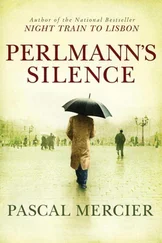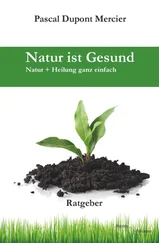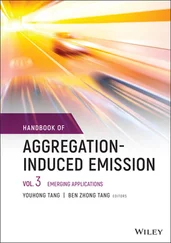Pascal Ribéreau-Gayon - Handbook of Enology, Volume 2
Здесь есть возможность читать онлайн «Pascal Ribéreau-Gayon - Handbook of Enology, Volume 2» — ознакомительный отрывок электронной книги совершенно бесплатно, а после прочтения отрывка купить полную версию. В некоторых случаях можно слушать аудио, скачать через торрент в формате fb2 и присутствует краткое содержание. Жанр: unrecognised, на английском языке. Описание произведения, (предисловие) а так же отзывы посетителей доступны на портале библиотеки ЛибКат.
- Название:Handbook of Enology, Volume 2
- Автор:
- Жанр:
- Год:неизвестен
- ISBN:нет данных
- Рейтинг книги:3 / 5. Голосов: 1
-
Избранное:Добавить в избранное
- Отзывы:
-
Ваша оценка:
Handbook of Enology, Volume 2: краткое содержание, описание и аннотация
Предлагаем к чтению аннотацию, описание, краткое содержание или предисловие (зависит от того, что написал сам автор книги «Handbook of Enology, Volume 2»). Если вы не нашли необходимую информацию о книге — напишите в комментариях, мы постараемся отыскать её.
is thus the same. It aims to provide practitioners, winemakers, technicians and enology students with foundational knowledge and the most recent research results. This knowledge can be used to contribute to a better definition of the quality of grapes and wine, a greater understanding of chemical and microbiological parameters, with the aim of ensuring satisfactory fermentations and predicting the evolution of wines, and better mastery of wine stabilization processes. As a result, the purpose of this publication is to guide readers in their thought processes with a view to preserving and optimizing the identity and taste of wine and its aging potential.
This third English edition of
, is an enhanced translation from the 7th French 2017 edition, and is published as a two-volume set describing aspects of winemaking using a detailed, scientific approach. The authors, who are highly-respected enologists, examine winemaking processes, theorizing what constitutes a perfect technique and the proper combination of components necessary to produce a quality vintage. They also illustrate methodologies of common problems, revealing the mechanism behind the disorder, thus enabling a diagnosis and solution.
Volume 2:
The Chemistry of Wine and Stabilization and Treatments Coverage includes: Wine chemistry; Organic acids; Alcohols and other volatile products; Carbohydrates; Dry extract and mineral matter; Nitrogen substances; Phenolic compounds; The aroma of grape varieties; The chemical nature, origin and consequences of the main organoleptic defects; Stabilization and treatment of wines; The chemical nature, origin and consequences of the main organoleptic defects; The concept of clarity and colloidal phenomena; Clarification and stabilization treatments; Clarification of wines by filtration and centrifugation; The stabilization of wines by physical processes; The aging of wines in vats and in barrels and aging phenomena.
The target audience includes advanced viticulture and enology students, professors and researchers, and practicing grape growers and vintners.


 of a wine in which an added quantity i of KHT has been dissolved. The left‐hand ends of these straight‐line segments correspond to the spontaneous crystallization temperatures
of a wine in which an added quantity i of KHT has been dissolved. The left‐hand ends of these straight‐line segments correspond to the spontaneous crystallization temperatures  . For example, if 3 g/l of KHT is dissolved in wine, the straight line representing its linear decrease in conductivity stops at a temperature of 18°C, i.e. the temperature where spontaneous crystallization occurs
. For example, if 3 g/l of KHT is dissolved in wine, the straight line representing its linear decrease in conductivity stops at a temperature of 18°C, i.e. the temperature where spontaneous crystallization occurs  .
. . It is therefore possible to obtain a set of spontaneous crystallization temperatures based on the addition of various quantities i of KHT ( Figure 1.11).
. It is therefore possible to obtain a set of spontaneous crystallization temperatures based on the addition of various quantities i of KHT ( Figure 1.11). defines the exponential supersolubility curve (B). The exponential solubility and supersolubility curves, representing the boundaries of the domain of supersaturation (DS), are parallel. This property, first observed in Champagne base wines, is used to deduce the spontaneous crystallization temperature of the initial wine.
defines the exponential supersolubility curve (B). The exponential solubility and supersolubility curves, representing the boundaries of the domain of supersaturation (DS), are parallel. This property, first observed in Champagne base wines, is used to deduce the spontaneous crystallization temperature of the initial wine. and
and  , respectively. The difference,
, respectively. The difference,  , defines the width of the DS of the wine in which i added KHT has been dissolved, expressed in degrees Celsius. The width of the domain of supersaturation is independent of the addition value i , as exponential curves (A) and (B) are roughly parallel. Thus, in the example described ( Figure 1.11), the width of the domain of supersaturation is close to 21°C, whether 1.1 g/l
, defines the width of the DS of the wine in which i added KHT has been dissolved, expressed in degrees Celsius. The width of the domain of supersaturation is independent of the addition value i , as exponential curves (A) and (B) are roughly parallel. Thus, in the example described ( Figure 1.11), the width of the domain of supersaturation is close to 21°C, whether 1.1 g/l  or 1.8 g/l
or 1.8 g/l  of KHT is added. If 21°C is subtracted from the true saturation temperature of the wine
of KHT is added. If 21°C is subtracted from the true saturation temperature of the wine  , i.e. no added KHT ( i = 0), it may be deduced that spontaneous crystallization is likely to occur in this wine at temperature
, i.e. no added KHT ( i = 0), it may be deduced that spontaneous crystallization is likely to occur in this wine at temperature  .
. . It was thus possible to find the width of the domain of supersaturation, i.e. 15°C.
. It was thus possible to find the width of the domain of supersaturation, i.e. 15°C. , closest to that of the model dilute alcohol solution. Therefore, the difference between the results for this sample and the higher values of the domains of supersaturation of fined samples defines the effect of the protective colloids. It is interesting to note that the sample treated with metatartaric acid had the widest supersaturation field and cold stabilization was completely ineffective in this case. This clearly demonstrates the inhibiting effect this polymer has on crystallization and, therefore, its stabilizing effect on wine ( Section 1.7.6). Stabilization by this method, however, is not permanent.
, closest to that of the model dilute alcohol solution. Therefore, the difference between the results for this sample and the higher values of the domains of supersaturation of fined samples defines the effect of the protective colloids. It is interesting to note that the sample treated with metatartaric acid had the widest supersaturation field and cold stabilization was completely ineffective in this case. This clearly demonstrates the inhibiting effect this polymer has on crystallization and, therefore, its stabilizing effect on wine ( Section 1.7.6). Stabilization by this method, however, is not permanent.










